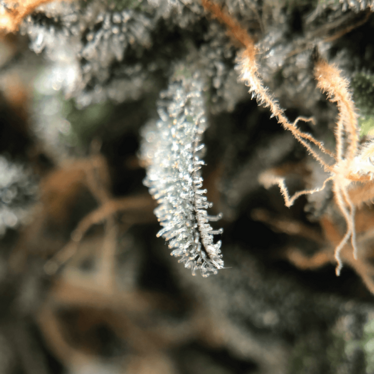
Sampling Standards: The Unspoken Truth
When it comes to the validity of a laboratory result, there are several factors to consider – and these are not always related to the quality of the analytical method. Though often overlooked, sampling is an integral aspect of the cannabis testing process; indeed, it is critical to the validity and comparability of all laboratory results.
sponsored by Premier Tech
If I think about standardization in the cannabis industry, my mind (probably like most scientists) automatically goes to the standardization of the testing methods, which makes sense, as it’s a well-documented issue in the market. And rightfully so, especially when considering the impact on consumer safety and the actual state of the market. By focusing too much on one obvious problem, we tend, as a community (myself included), to forget the big picture. In any field or industry, legitimate results or statistically viable groups of data must begin with a representative group of samples. Currently, based on my personal experiences, it is clear that the sampling procedures and methodology in the cannabis industry are vastly inconsistent, which makes the validation and comparison of results particularly difficult – even with access to good analytical technology and methods.
Sampling is the process of selecting and collecting a representative part of a population to establish the characteristics of the whole population. And though it may seem simple, I can assure you that cannabis, by its very nature, comes with its fair share of challenges.
Cannabis flowers or, more specifically, trichomes contain some of the most desirable, marketable, and tested compounds in the industry: the cannabinoids (THC, CBD, CBG...) and the terpenes. The trichome structures are highly fragile and can easily be damaged through variation in pressure, light and temperature. On top of that, the density of the trichomes and overall concentration can vary significantly in a “batch,” or even in one plant, depending on when, where, and how the flowers were grown, handled, and harvested. Having said that, it makes sense that the methods by which a grower collects, retains, and sends his cannabis samples to the labs will also have a strong impact on the outcome.

As a supplier of the industry, mainly with our PRO-MIX® brand, we conduct multiple trials and demonstrations each year across North America to document the performance of our products in cannabis cultivation. By doing so, it gave me the chance to interact with many people and companies that are actively involved in the field of standardization and chemical analysis. And so, not being an expert on the subject myself, I decided to contact Hubert Marceau, chemist and Director of Development at Phytochemia, who had this to say:
"As a Canadian lab, we have no control regarding the sampling methods of our customers and must assume that they did their sampling correctly. In reality, we see a large variability in the samples that we receive, due to the individual interpretation of the guidelines. This can create confusion when businesses want to compare themselves to others, since the variation induced by the sampling can sometimes be significant."
Marceau’s comment prompted me to investigate even further. The guidelines provided to the producers in terms of sampling are quite generic, undefined, and unregulated, leaving lots of room for interpretation. Human nature being what it is, interpretation rarely goes hand in hand with impartiality – especially in the case of cannabis, where the end results have a huge impact on the commercialization of the products. That puts the labs in a precarious position where they must deal with the inconsistency of the regulations, while trusting the ethics of the producers. Though they can guarantee the validity of a particular result based on the provided sample, the comparability remains uncertain because of the sampling inconsistencies between facilities.
Marceau also told me, “While we talk a lot about analytical method standardization, sampling is often overlooked. For example, to compare the impact of different factors on growing, it becomes crucial that the sampling is done in a uniform method, else the variation induced by the incorrect sample collection combined by the variation of the analytical method will overlap. This can cause the producer to wrongly overlook or prioritise certain parameters and cause an unnecessary increase in production cost. This is something critical in an industry that is still in its relative infancy, where there is still a lot to discover.”
As he just accurately pointed out, cannabis production (in its legal form) is a very young and fast-growing industry, and there is still so much to be explored. The lack of reliable content and the misunderstanding regarding cannabis sampling can often lead to confusion in the community. The clearer the guidelines are, the better it will be for everybody.
To protect consumers and inspire confidence in the community, we’re bound to evolve towards the same standards of more mature markets, such as alcohol. So regardless of any challenges, standardized testing methodologies and procedures must be implemented – sampling included – to accurately characterize cannabis in any form and anywhere. And that begs the question: where do we start?
Unfortunately, as you probably expected, I don’t have all the answers. However, I feel like everybody actively involved in this market has a part to play; as a manufacturer, our role is to raise awareness on the importance of standardization every chance we get. At some point, a more global testing reform must be implemented, and the way must be paved by the industry leaders. The regulatory agencies, the producers, and the laboratories must come together and take testing methods (and sampling) to the next level.
Meanwhile, it is our duty to stay informed and talk about those issues. Only by communicating, sharing opinions, and increasing research will we be able to bring the cannabis market and community to its rightful place.
Meet Mathias

Mathias Plourde, Biochemist, M.Eng., Market Specialist, Premier Tech Growers and Consumers
Mathias Plourde is a certified biochemist. He joined Premier Tech in 2018 and quickly became a medicinal market specialist and a technical resource regarding cannabis education for the PRO-MIX® team dedicated to professional growers.
He is passionate about the whole scientific side of cannabis production; especially how specific biological active ingredients can impact the chemical profile of cannabis and the overall health of the plant.
He supports the PRO-MIX® brand as well as the distribution network as a Market Specialist for the medicinal market.












